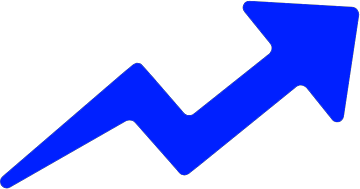In the world of SEO, off-page optimization is a critical component of building a successful website. While on-page optimization focuses on improving your website’s content and technical structure, off-page optimization refers to techniques that take place outside of your website, such as building links and social signals. By using these techniques, you can improve your website’s visibility and authority, which can lead to higher search engine rankings, more traffic, and ultimately, more conversions.
In this guide, we’ll explore how off-page optimization works and provide practical examples of how you can use these techniques to boost your website’s traffic.
Understanding Off-Page Optimization
Off-page optimization is a process of improving your website’s search engine ranking by building external links and social signals. Links are one of the most important factors that search engines use to determine the relevance and authority of your website. Social signals, such as likes, shares, and comments, are also becoming increasingly important to search engines.
When other websites link to your site, it tells search engines that your site is valuable and trustworthy. The more high-quality links you have pointing to your website, the more likely it is that search engines will rank your site higher in search results. Social signals, on the other hand, help to establish your website’s authority and credibility by indicating that your content is popular and engaging.
Building Links to Your Website
Building links is one of the most effective ways to improve your website’s visibility and authority. However, not all links are created equal. It’s essential to focus on building high-quality, relevant links from authoritative websites. Here are three practical examples of how you can build links to your website:
Guest Blogging
Guest blogging is a technique where you write a blog post for another website in your industry. In exchange for providing valuable content, you can include a link back to your website in your author bio or within the content itself. This technique is a win-win situation for both parties. You get exposure to a new audience, and the website you’re writing for gets fresh content for their audience.
When guest blogging, it’s crucial to focus on creating high-quality content that provides value to the website’s audience. You should also ensure that the website you’re writing for is relevant to your industry and has a high domain authority.
Broken Link Building
Broken link building is a technique where you find broken links on other websites and offer to replace them with a link to your website. To find broken links, you can use tools like Check My Links or Broken Link Checker. Once you’ve identified a broken link, you can reach out to the website owner and offer to replace it with a link to your relevant content.
When using this technique, it’s essential to ensure that your content is relevant and provides value to the website’s audience. You should also ensure that the website you’re targeting has a high domain authority and is relevant to your industry.
Resource Link Building
Resource link building is a technique where you create a valuable resource on your website and then reach out to other websites in your industry to promote it. For example, if you run a website about marketing, you could create a comprehensive guide to marketing tactics and then reach out to other marketing websites to share your guide.
When using this technique, it’s essential to ensure that your resource is high-quality and provides value to your audience. You should also ensure that the websites you’re targeting have a high domain authority and are relevant to your industry.
Building Social Signals to Your Website
In addition to building links, social signals are becoming increasingly important to search engines. Social signals refer to engagement on social media platforms, such as likes, shares, comments, and followers. Here are three practical examples of how you can build social signals to your website:
- Shareable Content
Creating shareable content is one of the most effective ways to increase social signals to your website. Shareable content is content that is valuable, informative, and engaging. Examples of shareable content include infographics, videos, and blog posts.
When creating shareable content, it’s crucial to understand your target audience and create content that speaks to their interests and needs. You should also ensure that your content is visually appealing and easy to share on social media platforms.
- Social Media Engagement
Engaging with your audience on social media platforms is another effective way to increase social signals to your website. By responding to comments, liking posts, and sharing content from other users, you can build a loyal following and increase engagement with your brand.
When engaging with your audience on social media, it’s crucial to be authentic and genuine. You should also ensure that your content is relevant and provides value to your audience.
- Influencer Marketing
Influencer marketing is a technique where you partner with social media influencers in your industry to promote your brand and content. Influencers have a loyal following of engaged users, and partnering with them can help you increase social signals and drive traffic to your website.
When using influencer marketing, it’s essential to ensure that the influencer you’re partnering with is relevant to your industry and has a loyal following of engaged users. You should also ensure that the content you’re promoting aligns with your brand values and messaging.
Conclusion
Off-page optimization is a critical component of building a successful website. By building high-quality links and social signals to your website, you can improve your website’s visibility and authority, which can lead to higher search engine rankings, more traffic, and ultimately, more conversions.
When building links and social signals to your website, it’s essential to focus on quality over quantity. It’s better to have a few high-quality links from authoritative websites than a lot of low-quality links from spammy websites. Similarly, it’s better to have a small but engaged social media following than a large but disengaged following.
By following the examples outlined in this guide, you can build high-quality links and social signals to your website and drive more traffic and conversions. Remember to be patient and persistent, as building a strong off-page optimization strategy takes time and effort.

